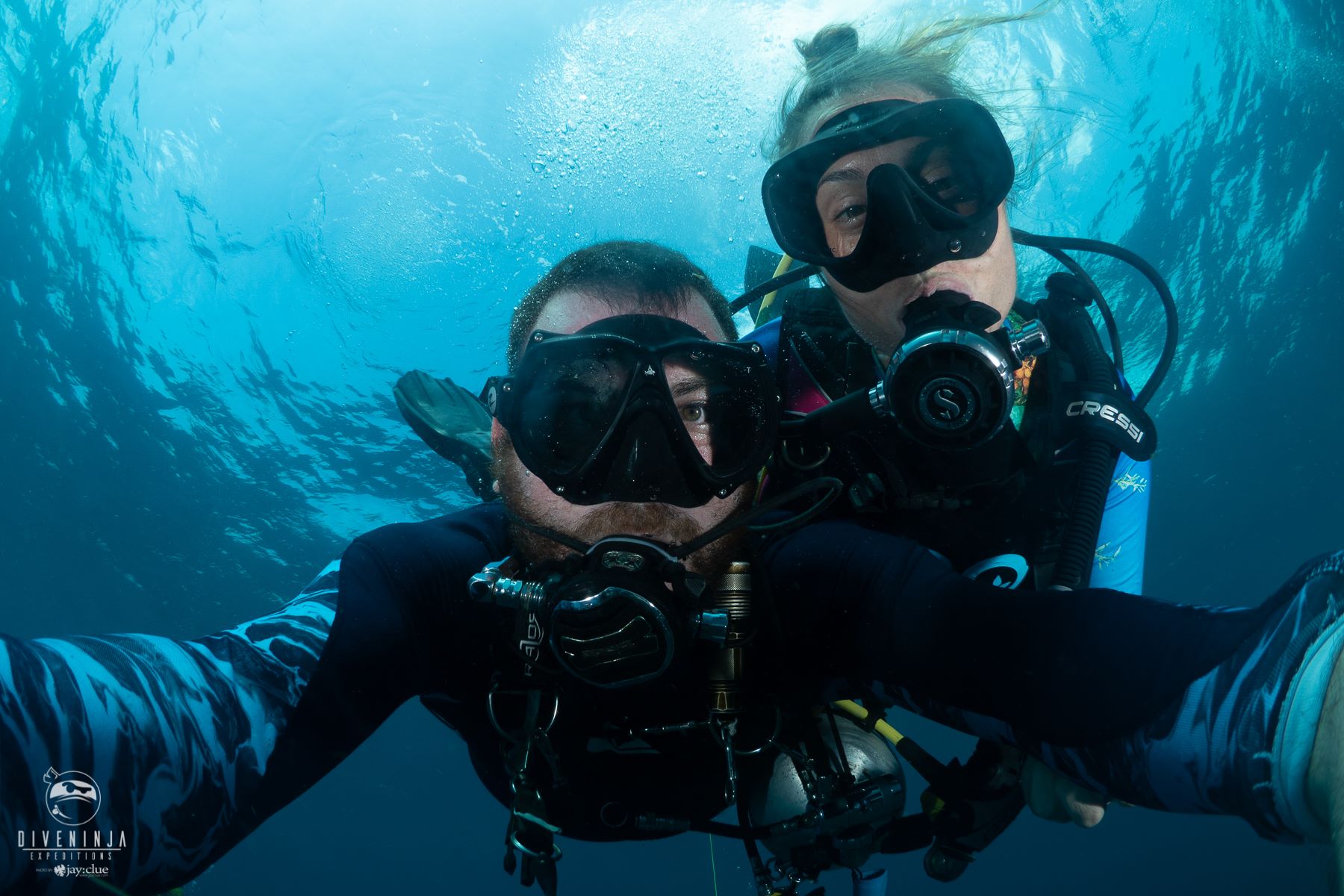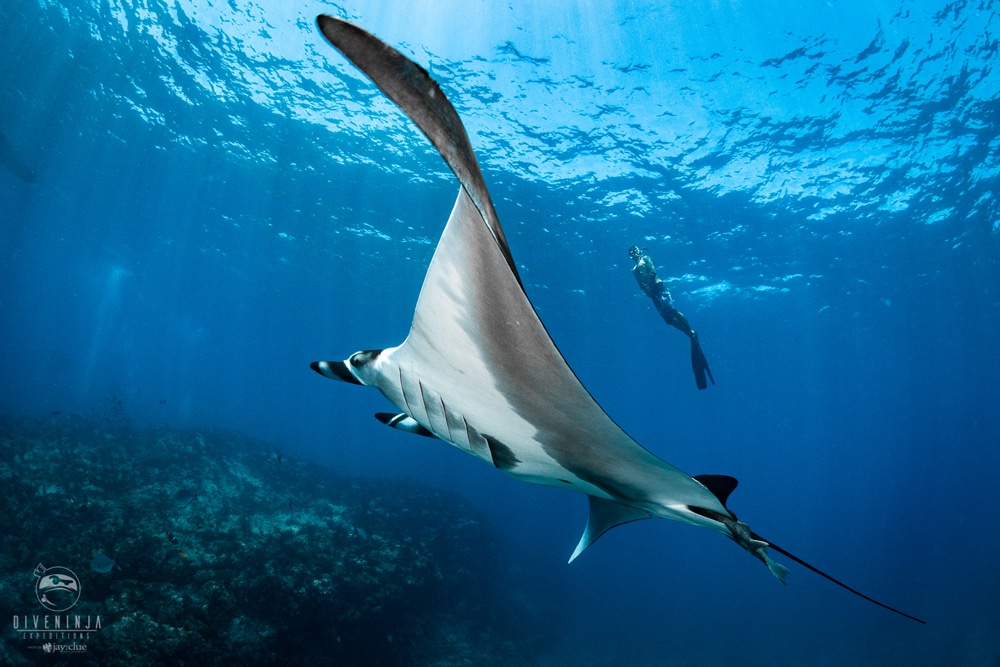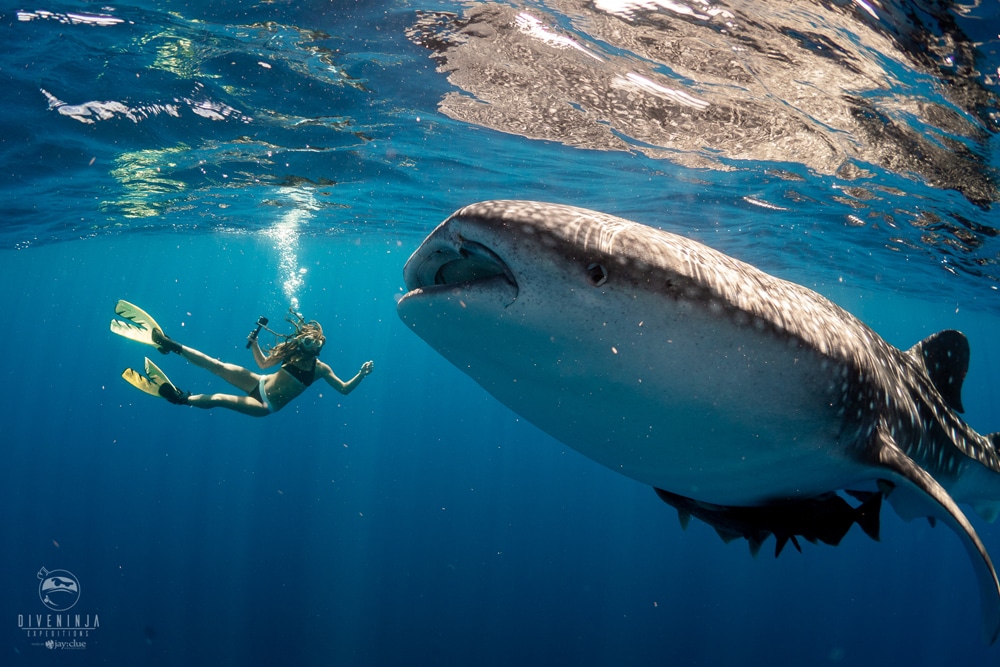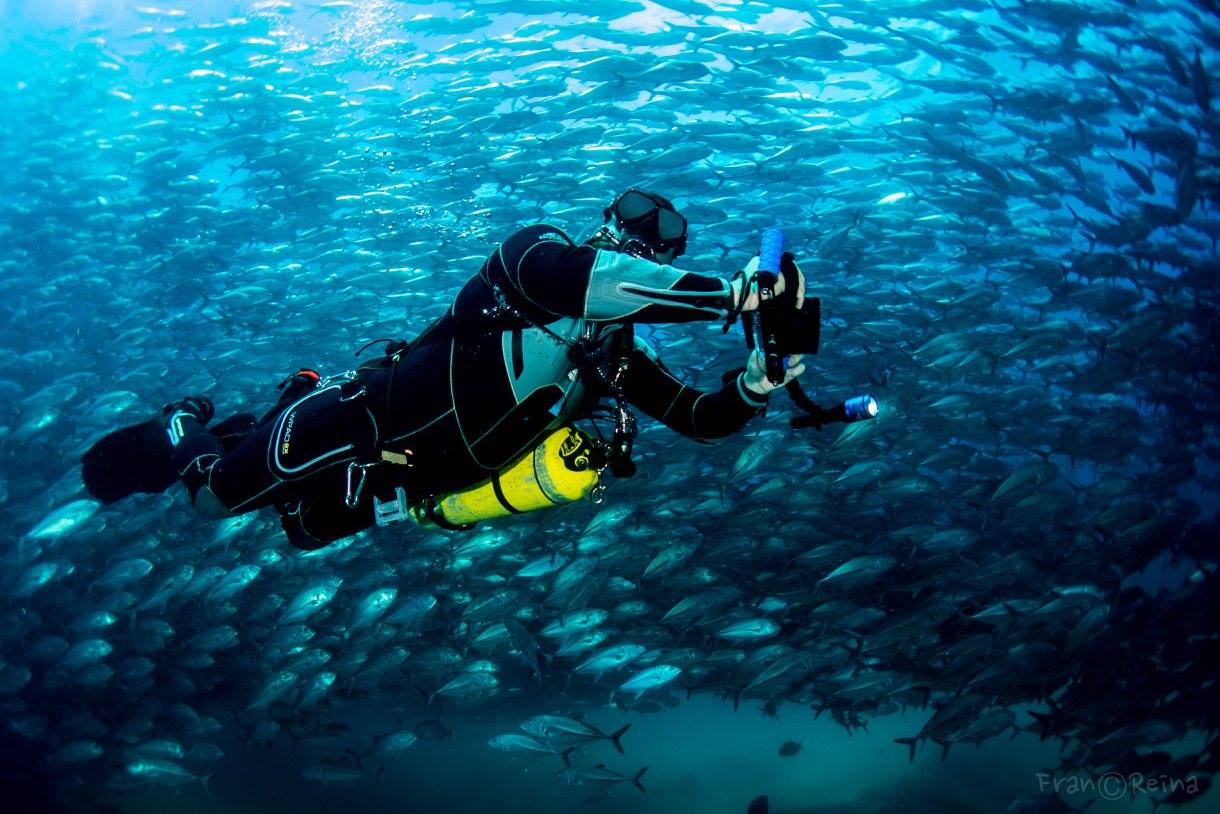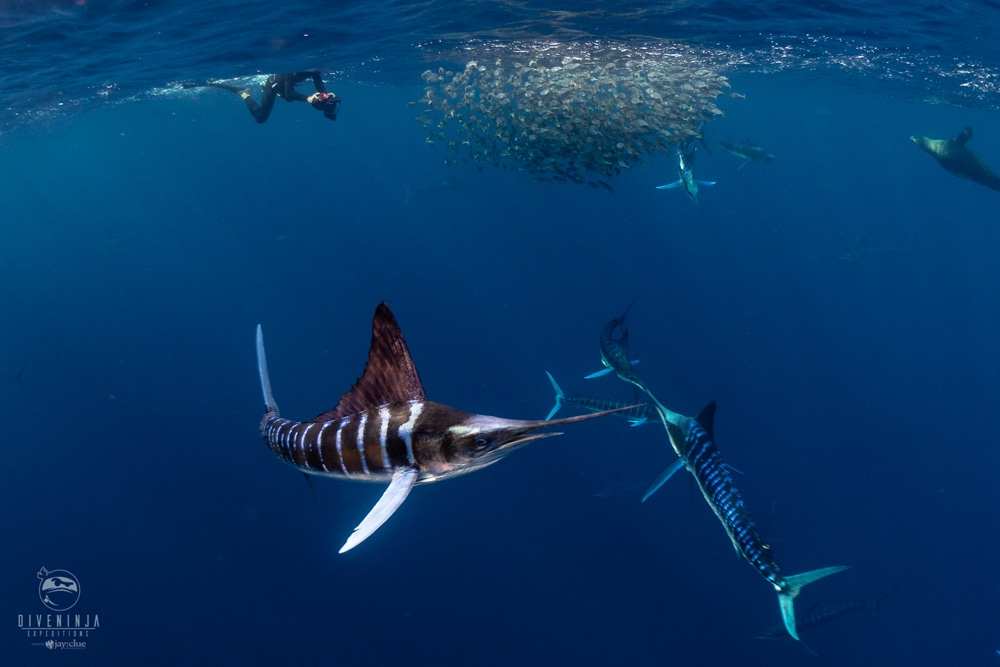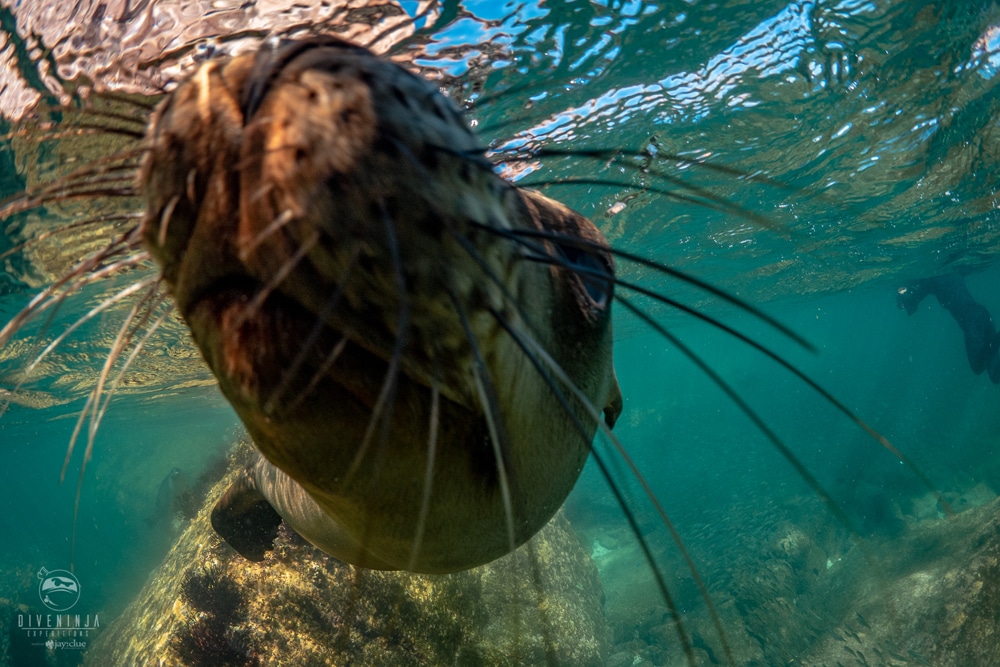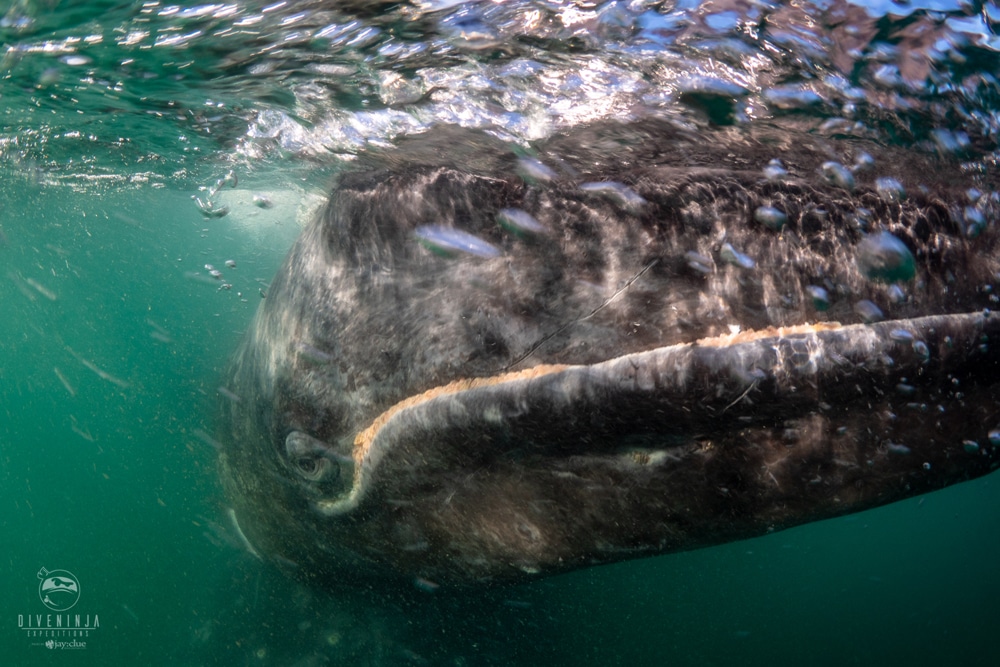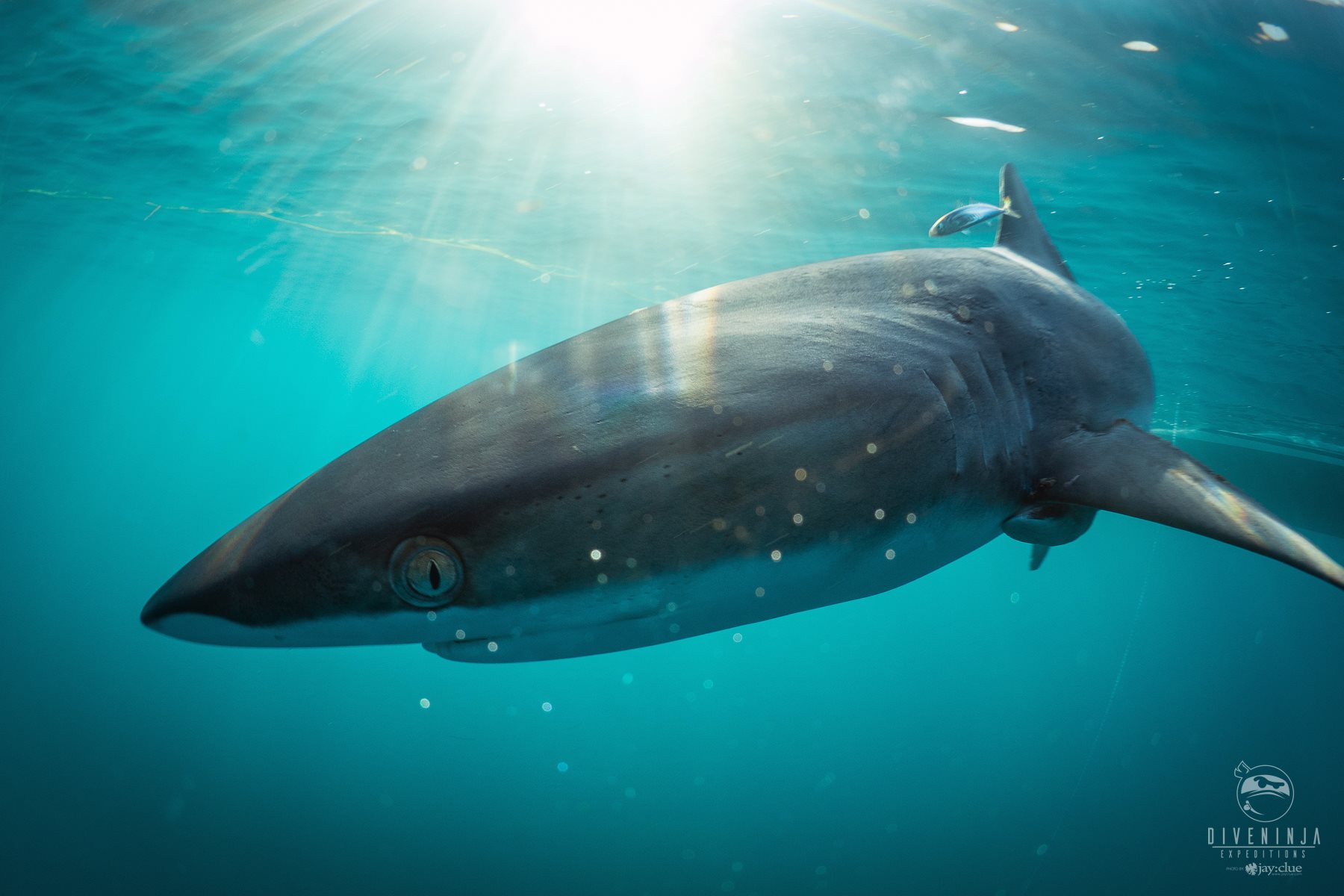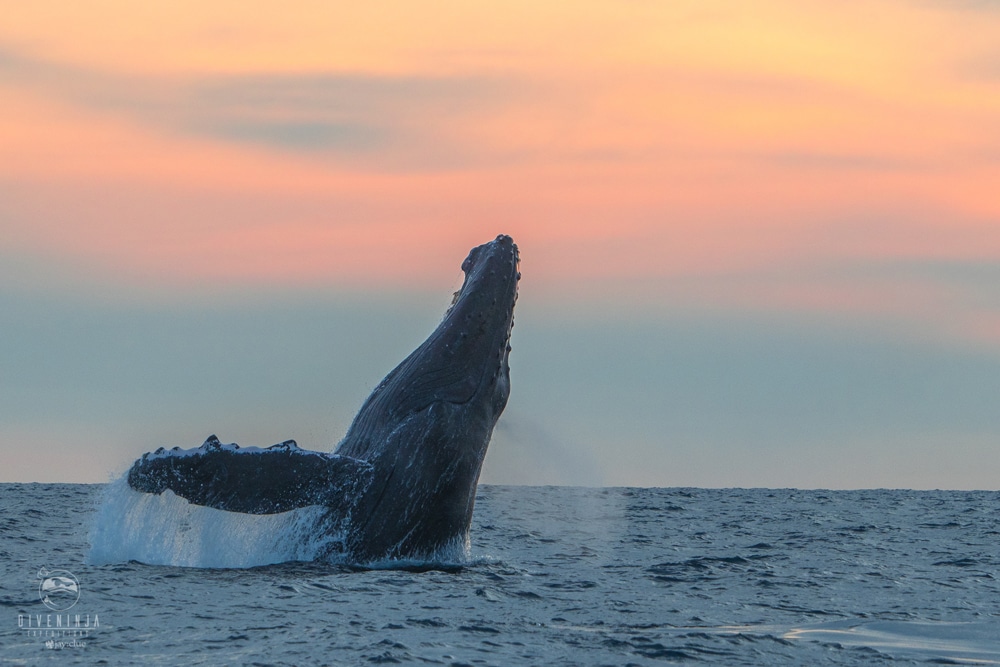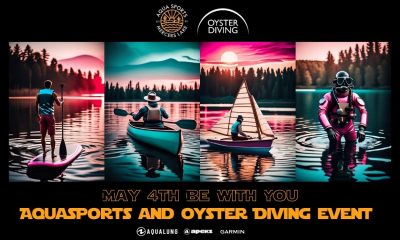News
Diving with… Jay Clue, Dive Ninja Expeditions, Cabo San Lucas, Mexico
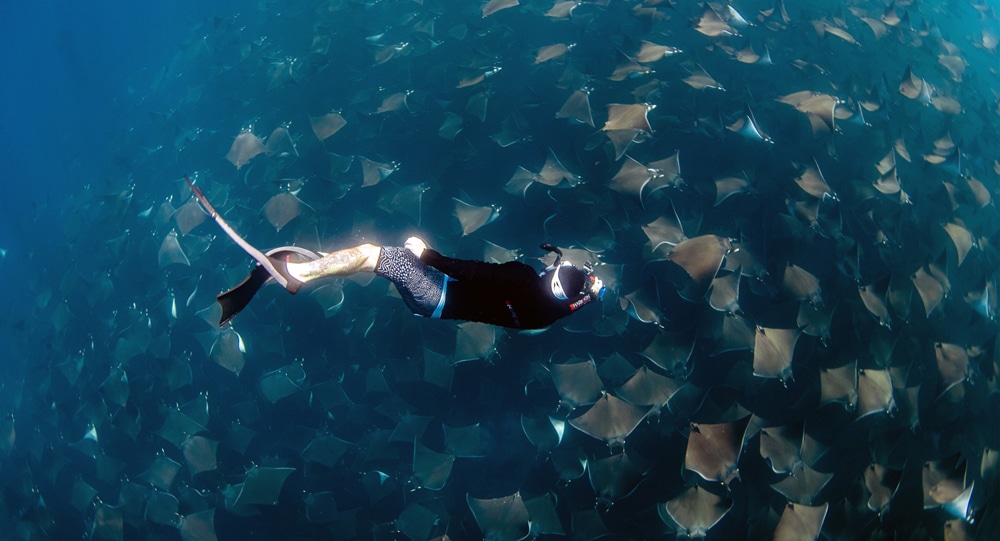
In this ongoing series, we speak to the people who run dive centres, resorts and liveaboards from around the world about their businesses and the diving they have to offer…
Jay Clue
What is the name of your business?
Dive Ninja Expeditions
What is your role within the business?
I juggle a few roles, but I guess that comes with running any business. Technically my job title is Founder/ Team leader, but my time is normally spent leading expeditions, teaching courses, or scouting & exploring new locations to bring our guests to.
How long has the business operated for?
We officially opened our doors in May 2017.
How long have you dived for, and what qualification are you?
I’ve been in diving for about a decade now and done around 6000+ dives at last estimate. I’m a Tec Trimix Instructor and Full Cave Diver, as well as a laundry list of other certifications & qualifications. I’m a bit of a big nerd (laughs).
What is your favorite type of diving?
I love diving with big animals, exploring new areas, and going for the more adventurous, off the grid, types of diving. The kind of dives that take you to obscure places in search of some type of special encounter that leaves you screaming through your regulator in excitement when it happens. That’s the kind of experiences I live for and what would become the basis for creating Dive Ninja Expeditions.
If you could tell people one thing about your business (or maybe more!) to make them want to visit you what would it be?
To start, Dive Ninja Expeditions takes a different approach to dive tourism. We focus on creating unique high-quality experiences and specialized tours & expeditions that aim to bridge the gap between tourism, marine science, and conservation. To give you an example, we’re really big on building citizen science trips with local marine biologists that allow our guests to not only learn about the local area but also contribute to actual research activities that play a vital part in helping to understand and protect our oceans.
We lead daily tours and multi-day expeditions all over Baja California Sur, Mexico from our Ninja HQ in Cabo San Lucas. Plus, throughout the year we also lead trips to different locations around the world to check out some of the best diving our planet has to offer. We also have an extensive list of courses and workshops on offer that span scuba diving, technical diving, freediving, photography and conservation.
One of the things we hear a lot from our guests is that diving with us feels like diving with old friends. I’d like to say this could be attributed to our high percentage of repeat guests, but it’s actually something we also hear a lot of from first time guests. I think it’s because we see our guests more like family instead of customers. One big Ninja Family that shares a passion for the ocean.
What is your favorite dive in your location and why?
It’s really hard to narrow down just one (laughs). Baja really has so much to offer throughout the year. But I think if I had to pick just one favorite it would be diving with the mobula rays. Every year starting in the late spring Munk’s Devil Rays begin to create gigantic schools around the coasts of Baja California Sur. The aggregations are one of the largest of any ray species in the world. It’s such an incredible experience. If you’ve seen BBC’s Blue Planet, you know what I’m talking out. They launch from the ocean splashing back into the sea. But not just 1 or 2…we’re talking hundreds.
It sounds like popcorn. But that’s only the appetizer, imagine ducking under the surface and swimming alongside thousands of these devil rays that have formed a school 20 meters high and are so densely packed together that it blocks the sunlight from reaching below them. Seeing them slowly soar through the ocean in unison is unlike anything on earth. It is truly breath-taking.
What types of diving are available in your location?
Cabo San Lucas and the Baja offer a pretty wide variety of diving that can accommodate everyone from beginners to seasoned experts, as well as great spots for freediving and technical diving too. We have relaxed shallow sites, steep sheer face walls, offshore sea mounts, marine parks, pinnacles, big schools of fish, sea lions, large pelagics, multiple species of sharks & whales, a bit of macro diving, and even a few wrecks. But I think what makes Baja so special is the unique expeditions to see the different migrations that happen throughout the year; such as the Mobula Ray aggregations, Striped Marlin hunting giant bait balls, as well as multiple shark & whale migrations throughout the year.
What do you find most rewarding about your current role?
I think most people would say I have a dream job. I get to spend my days in the water exploring, looking for new areas to dive and new incredible encounters to have. But for me, the most rewarding part is seeing the work we do inspire others to get involved in conservation. When our guests tell us how they ditched disposable plastics after diving with us, or started volunteering, or advocating for sharks in their hometown it makes my love for what we do grow even more.
I’d also have to say one of my favorite parts of the job is being able collaborate with & meet so many passionate scientists and conservationists. They are such an inspiration. Humans like Regi Domingo, David Valencia, Frida Lara, Marta Palacios, Sarah Richard, Pete Rodriguez Arana, Dr Robert Rubin, Mauricio Hoyas, and the list just goes on and on. These are incredible people doing remarkable things for our oceans. I truly feel blessed that we can partner with them. And it makes me feel great that as a business we can work with them to give back by helping to facilitate research and conservation projects that aid in protecting & understanding our oceans.
What is your favorite underwater creature?
I have always had this fascination with octopus. I find them incredibly interesting on so many levels. Whether it’s their amazing camouflage abilities, their intelligence & curiosity, or even just their almost alien looking appearance. I could honestly just spend entire dives hanging out with them.
Are there any exciting changes / developments coming up in the near future?
There is always a bunch of stuff brewing at the Ninja HQ! Right now, we are getting ready to release the dates for our 2020 Mobula Ray Expedition season. We’ve also been focused on launching our new conservation arm of the company — Dive Ninja Ocean Warriors. Plus, we are currently scouting a few new locations in Baja for some potential, new expeditions. I can’t say too much about them right now as it’s a ninja secret. But I will say that if it all comes together it could be a game changer for diving in Mexico and North America.
We’ve also got a super cool project coming up in French Polynesia for 2020 that we are working on with Girls That Scuba founder Sarah Richard, Nakawe Project founder Regina Domingo, and incredible photographer, Alex Kydd. We’ll be releasing the full details this August. I’m definitely excited for this one. There’s a bunch of other stuff too but I got to keep some of our ninja secrets for now!
As a center what is the biggest problem you face at the moment?
One of the big issues we are following right now is the spike in grey whale deaths this year. There’s been over 80 reported so far this season alone and no one really understands why. These curious giants are one of my favorite reasons for living in Baja. We share some of the most incredible up-close interactions with them here in the winter. So, it’s really sad and worries me that so many of them are dying on their migration back north.
We are also quite concerned about shark fishing in Baja, especially the fishing of protected or more vulnerable species such as the Mako. Organizations such as Nakawe Project are fighting hard for them and working with the local fishing communities to help change this, but there is still a long way to go. As a shop we are working on projects that aim to create alternative revenue streams for local fishermen through eco-tourism in hopes of showing them that sharks & rays are worth much more money alive.
Is your center involved in any environmental work?
Dive Ninjas is one of those rare centers that actually had environmental work as one of the core pillars in our business model from the start. We’ve built the company to be different than the average dive center and one of the ways we do this is by focusing our efforts on creating true eco-tourism platforms that aim to bridge the gap between tourism, science, and conservation. For example, the majority of our trips and expeditions include some form of citizen science and/or conservation aspects. We regularly invite marine biologists and researchers to be part of our expeditions to give presentations or create discussions, while also allowing the guests the chance to take part in actual research activities.
We’ve also worked with environmental consultants from the start to see how we can minimize our impact on the environment in all facets of the business. But it goes beyond this for us, our entire team is very passionate about the environment and our oceans. Every day we try to educate and inspire our guests to get involved and take action. It’s something we at Team Ninja are dedicated to and I wholeheartedly believe that we can ignite change from.
How do you see the SCUBA / Freediving / snorkeling industry overall? What changes would you make?
I feel there is a growing rift in the industry between the old and new ways of thinking in the industry that is starting to become a chasm. I don’t think it is going to change anytime soon, although I hope it does. But in the last few years we’ve seen this positive change in the industry and in the population in general. We see so many more people interested in science and protecting our oceans and planet. We see a big shift in what divers want too. They want something more than just paying for a quick jump in the water. They want experiences that have substance. They want to learn. They want to give back. And this is incredibly beautiful.
But on the other hand, I still hear stories from female students of how they were laughed at when they asked about wanting to try their hand at learning technical diving because they were ‘too small’ or ‘too weak’. Plus, we still see many tour operators blatantly raping our oceans for profit. I would love to see more in the industry truly working towards protecting our oceans and not just using it as a marketing campaign. And I’d love to see less of this archaic thinking towards females in the industry. So, I believe that if more and more newer shops like us try to set the bar a little higher then maybe others will be inspired to follow suit.
What would you say to our visitors to promote the diving you have to offer?
Baja is a land of contrasts. We have cactus filled deserts with barren rocky mountains reaching from star filled skies down to meet bright blue waters which are known to host more migratory marine species than anywhere else in the world. Cousteau nicknamed this region ‘the world’s aquarium’ because of the abundance and variety of life found here. It is a spectacular area where the mighty Pacific Ocean meets the beautiful Sea of Cortez. Yet much of the peninsula is untouched and just begging to be explored.
That’s where Dive Ninja Expeditions comes in. Whether it’s chasing huge bait balls & striped marlin 20 miles off shore or gliding along with thousands of mobula rays or just taking a relaxing wall dive in the Cabo San Lucas Marine Park our team can deliver the adventure you are looking for. And along the way we can teach you about the incredible animals and ecosystem that make Baja so special. Or even help you take an active part in giving something back to protect our oceans and further our understanding of them. Whether it’s to one of the more well-known areas or one of our secret ninja spots, we can show you a side of Baja that no other operator can. But best of all you can count on that it’s always done in a safe and conservation minded way.
Where can our visitors find out more about your business?
Check out our website to see all the trips, tours, expeditions and courses we have on offer. But I definitely recommend following us on Instagram & Facebook because that is where all the latest news and upcoming trips are released first.
Website: www.DiveNinjaExpeditions.com
Facebook: /DiveNinjas
Instagram: @DiveNinjas
To follow more of Jay Clue’s adventures follow him on Instagram, Facebook and shortly on www.scubaverse.com as a blogger!
Blogs
Northern Red Sea Reefs and Wrecks Trip Report, Part 3: The Mighty Thistlegorm

Jake Davies boards Ghazala Explorer for an unforgettable Red Sea diving experience…
Overnight, the wind picked up, making the planned morning dive a bit bumpy on the Zodiacs to the drop point on Thomas Reef. There, we would dive along the reef before descending through the canyon and then passing under the arch before ascending the wall with a gentle drift. The site provided great encounters with more pelagic species, including shoals of large barracuda, tuna, and bigeye trevally.
Once back on the boat, it was time to get everything tied down again as we would head back south. This time, with the wind behind us, heading to Ras Mohammed to dive Jackfish Alley for another great gentle drift wall dive before then heading up the coast towards the Gulf of Suez to moor up at the wreck of the Thistlegorm. This being the highlight wreck dive of the trip and for many onboard, including myself, it was the first time diving this iconic wreck. I had heard so much about the wreck from friends, and globally, this is a must on any diver’s list. Fortunately for us, there was only one other boat at the site, which was a rarity. A great briefing was delivered by Ahmed, who provided a detailed background about the wreck’s history along with all the required safety information as the currents and visibility at the site can be variable.

Kitting up, there was a lot of excitement on deck before entering the water and heading down the shoreline. Descending to the wreck, there was a light northerly current which reduced the visibility, making it feel more like the conditions that can be found off the Welsh coast. At 10m from the bottom, the outline of the wreck appeared as we reached the area of the wreck which had been bombed, as our mooring line was attached to part of the propeller shaft. Arriving on deck, instantly everywhere you looked there were many of the supplies which the ship was carrying, including Bren Carrier tanks and projectiles that instantly stood out.

We headed around the exterior, taking a look at the large propeller and guns mounted on deck before entering the wreck on the port side to take a look in the holds. It was incredible to see all the trucks, Norton 16H, and BSA motorcycles still perfectly stacked within, providing a real snapshot in time.

Overall, we had four dives on the Thistlegorm, where for all of the dives we were the only group in the water, and at times, there were just three of us on the whole wreck, which made it even more special, especially knowing that most days the wreck has hundreds of divers. Along with the history of the wreck, there was plenty of marine life on the wreck and around, from big green turtles to batfish, along with shoals of mackerel being hunted by trevally. Some unforgettable dives.

The final leg of the trip saw us cross back over the Suez Canal to the Gobal Islands where we planned to stay the night and do three dives at the Dolphin House for the potential of sharing the dive with dolphins. The site, which included a channel that was teeming with reef fish, especially large numbers of goatfish that swam in large shoals along the edge of the reef. These were nice relaxing dives to end the week. Unfortunately, the dolphins didn’t show up, which was okay as like all marine life they are difficult to predict and you can’t guarantee what’s going to be seen. With the last dive complete, we headed back to port for the final night where it was time to clean all the kit and pack before the departure flight the next day.

The whole week from start to finish on Ghazala Explorer was amazing; the boat had all the facilities you need for a comfortable week aboard. The crew were always there to help throughout the day and the chefs providing top quality food which was required after every dive. The itinerary providing some of the best diving with a nice mixture of wreck and reef dives. I would recommend the trip to anyone, whether it’s your first Red Sea liveaboard in the Red Sea or you’re revisiting. Hopefully, it’s not too long before I head back to explore more of the Red Sea onboard Ghazala Explorer.

To find out more about the Northern Red Sea reef and wrecks itineraries aboard Ghazala Explorer, or to book, contact Scuba Travel now:
Email: dive@scubatravel.com
Tel: +44 (0)1483 411590
Photos: Jake Davies / Avalon.Red
Blogs
Northern Red Sea Reefs and Wrecks Trip Report, Part 2: Wall to Wall Wrecks

Jake Davies boards Ghazala Explorer for an unforgettable Red Sea diving experience…
The second day’s diving was a day full of wreck diving at Abu Nuhas, which included the Chrisoula K, Carnatic, and Ghiannis D. The first dive of the day was onto the Chrisoula K, also known as the wreck of tiles. The 98m vessel remains largely intact where she was loaded with tiles which can be seen throughout the hold. The stern sits at 26m and the bow just below the surface. One of the highlights of the wreck is heading inside and seeing the workroom where the machinery used for cutting the tiles are perfectly intact. The bow provided some relaxing scenery as the bright sunlight highlighted the colours of the soft coral reef and the many reef fish.

Following breakfast, we then headed to the next wreck, which was the Carnatic. The Carnatic is an 89.9m sail steamer vessel that was built in Britain back in 1862. She ran aground on the reef back in 1869 and remains at 27m. At the time, she was carrying a range of items, including 40,000 sterling in gold. An impressive wreck where much of the superstructure remains, and the two large masts lay on the seafloor. The wooden ribs of the hull provide structures for lots of soft corals, and into the stern section, the light beams through, bouncing off the large shoals of glass fish that can be found using the structure as shelter from the larger predators that are found outside of the wreck.

The final wreck at Abu Nuhas was the Ghiannis D, originally called ‘Shoyo Maru,’ which was 99.5m long and built in Japan back in 1969 before becoming a Greek-registered cargo ship in 1980. The ship then ran aground on the reef on April 19th, 1983, and now sits at the bottom at a depth of 27m. Heading down the line, the stern of the ship remains in good condition compared to the rest of the hull. The highlight of the wreck, though, is heading into the stern section and down the flights of stairs to enter the engine room, which remains in good condition and is definitely worth exploring. After exploring the interior section of the ship, we then headed over to see the rest of the superstructure, where it’s particularly interesting to see the large table corals that have grown at the bow relatively quickly considering the date the ship sank. After surfacing and enjoying some afternoon snacks, we made sure everything was strapped down and secured as we would be heading north and crossing the Gulf of Suez, where the winds were still creating plenty of chop.

The next morning, it was a short hop to Ras Mohammed Nature Reserve for the next couple of days of diving. The 6am wake-up call came along with the briefing for the first site we would be diving, which was Shark & Yolanda. The low current conditions allowed us to start the dive at Anemone City, where we would drift along the steep, coral-filled wall. These dives involved drifts, as mooring in Ras Mohammed wasn’t allowed to protect the reefs. As a dive site, Shark & Yolanda is well-known and historically had a lot of sharks, but unfortunately not so many in recent years, especially not so early in the season. However, there was always a chance when looking out into the blue.

The gentle drift took us along the steep walls of the site, with plenty of anemone fish to be seen and a huge variety of corals. It wasn’t long into the dive before we were accompanied by a hawksbill turtle, who drifted with us between the two atolls before parting ways. Between the two reefs, the shallow patch with parts of coral heads surrounded by sand provided the chance to see a few blue-spotted stingrays that were mainly resting underneath the corals and are always a pleasure to see. With this being the morning dive, the early sunlight lit up the walls, providing tranquil moments. Looking out into the blue, there was very little to be seen, but a small shoal of batfish shimmering underneath the sunlight was a moment to capture as we watched them swim by as they watched us.

Towards the end of the dive, we stopped at the wreck of the Jolanda where the seafloor was scattered with toilets from the containers it was carrying. This provided a unique site to make a safety stop, which was also accompanied by a large barracuda slowly swimming by, along with a hawksbill turtle calmly swimming over the reef as the sun rays danced in the distance.
For the next dive, we headed north to the Strait of Tiran to explore the reefs situated between Tiran Island and Sharm El Sheik, which were named after the British divers who had found them. We started on Jackson before heading to Gordons Reef, where we also did the night dive. All the atolls at these sites provided stunning, bustling coral reefs close to the surface and steep walls to swim along, which always provided the opportunity to keep an eye out for some of the larger species that can be seen in the blue. Midwater around Jackson Reef was filled with red-toothed triggerfish and shoals of banner fish, which at times were so dense that you couldn’t see into the blue. Moments went by peacefully as we enjoyed the slow drift above the reef, watching these shoals swim around under the mid-afternoon sun.

The night dive at Gordon’s Reef was mainly among the stacks of corals surrounded by sand, which was great to explore under the darkness. After some time circling the corals, we came across what we were really hoping to find, and that was an octopus hunting on the reef. We spent the majority of the dive just watching it crawl among the reef, blending into its changing surroundings through changes in colour and skin texture. It’s always so fascinating and captivating to watch these incredibly intelligent animals, in awe of their ability to carry out these physical changes to perfectly blend into the reef. Before we knew it, it was time to head back to the boat to enjoy a well-deserved tasty dinner prepared by the talented chefs onboard.
Check in for the 3rd and final part of this series from Jake tomorrow!
To find out more about the Northern Red Sea reef and wrecks itineraries aboard Ghazala Explorer, or to book, contact Scuba Travel now:
Email: dive@scubatravel.com
Tel: +44 (0)1483 411590
Photos: Jake Davies / Avalon.Red
-

 News3 months ago
News3 months agoHone your underwater photography skills with Alphamarine Photography at Red Sea Diving Safari in March
-

 News3 months ago
News3 months agoCapturing Critters in Lembeh Underwater Photography Workshop 2024: Event Roundup
-

 Marine Life & Conservation Blogs2 months ago
Marine Life & Conservation Blogs2 months agoCreature Feature: Swell Sharks
-

 Blogs2 months ago
Blogs2 months agoMurex Resorts: Passport to Paradise!
-

 Blogs2 months ago
Blogs2 months agoDiver Discovering Whale Skeletons Beneath Ice Judged World’s Best Underwater Photograph
-

 Gear Reviews3 months ago
Gear Reviews3 months agoGear Review: Oceanic+ Dive Housing for iPhone
-

 Marine Life & Conservation2 months ago
Marine Life & Conservation2 months agoSave the Manatee Club launches brand new webcams at Silver Springs State Park, Florida
-

 News3 months ago
News3 months agoWorld’s Best Underwater Photographers Unveil Breathtaking Images at World Shootout 2023


